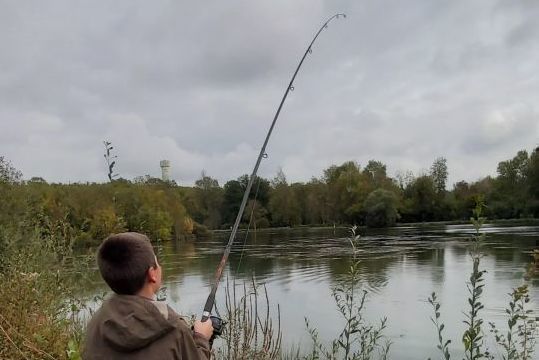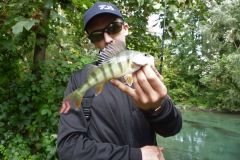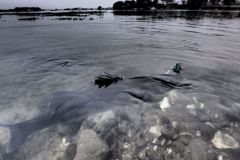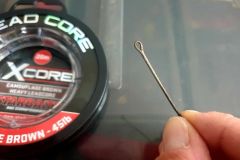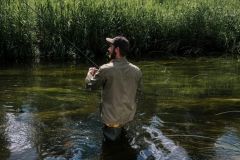The key
When the line is in the right place, with the right leader and quality bait or lure, attention is focused on the magic moment of the strike. It can be violent, with the rod bending suddenly, the float diving in an instant or the lure disappearing in a frothy mess. Unless you're using a self-shoeing circle hook, in which case the fish should hook itself.
On a big bite, you can also let go for a few seconds so that the fish can sow your bait before hooking out or blocking the line. Other times, the fish doesn't just gobble up the prey it has just found. He looks at it, turns around several times, takes it in his mouth once and spits it out instantly. This process can last many minutes with some particularly wary species. This can be seen in small jerks in the tip or on the float, sometimes a semblance of quivering or visible or invisible tracking behind the lure.
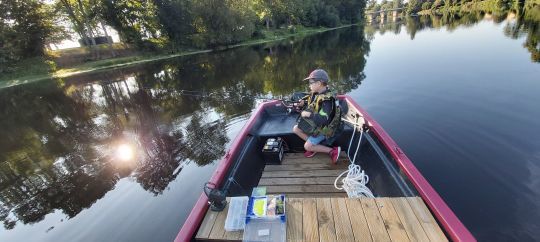
Shoeing
The rod should be held in the hand, lowered, waiting for a marked pull. When the pull comes, the rod should be moved in a wide circular motion, allowing the line to be reeled in and the hook to be jabbed into the fish's mouth.
It is also possible for the banner to relax. In this case, the fish is moving towards you after having swallowed the hook. Quickly reel the rod down until you feel a contact at the other end, then strike. This is where the reel brake comes into its own, giving you a bit of line if you've pulled too hard, thus preventing the line from breaking. Then, if the fish is good, the reel will start to squeal violently and the rod will bend under its start-up.
The battle
During the fight, the ideal situation is for the angler to maintain an angle of between 70° and 120° between the rod and the line, to ensure that the rod will always have its cushioning effect on the fish's head strikes and starts.
To do this, the rod may be vertical to the sky, horizontal, or even plunged into the water. A common mistake is to hold the rod high even when the fish is right in front of the angler, which almost certainly leads to breakage, as the reel can't release the line on a strong pull. To bring the catch back towards you, the angler retrieves the line by pumping, i.e. he pulls on his catch by raising the rod and then reels by lowering it to store the line.
Ideally, you don't pull away from the fish, but rather sideways, which throws it off balance like a judo grip and shortens the time needed to bring it to you. When the fish pulls powerfully in its turn, let the reel give it line so that it gradually tires.
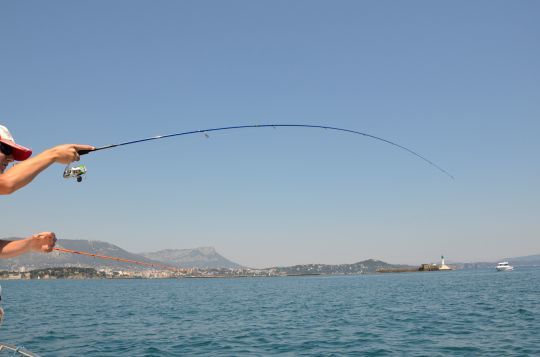
If the pull is really powerful and fast, especially on a big fish, it may be a good idea to reduce the drag slightly to compensate for the high line take-up that your opponent is pulling anyway. Then it's up to the angler again, and so on. On a large specimen, the boat may be manoeuvred to follow the line. In fact, if too much line is pulled out, it may break from its catch in the water.
Whether the boat is moving forwards or backwards, take care to follow the direction of the line and where it enters the water, not the direction the fish is moving. When a long distance of line is in the water, the direction of the fish and that of the line may be opposite.
Each fish has its own defense: some leap out of the water, others head out to sea, some swim into the depths, and the hardest to counter are those that take refuge in branches or rocks. The battle must be waged by the angler with the fish in mind. If the fish is trying to get to the hole, the angler has to restrain it to prevent it from taking refuge there, sometimes by approaching the limit of the line's resistance, as it's then a case of double or nothing. Fish fighting in shallow water or in a clean area can be fought more gently.
Adjusting the brake
Whichever technique you use, you need to adjust your drag, i.e. the reel's spool should rotate under a slightly strong pull, releasing line without breaking. This adjustment is made by turning a specially designed knob, generally located above the spool on a fixed-spool model and on the side for rotating spools.
The aim is simple: not to break when a fish bites your line and heads out to sea. To be more precise, the basic setting of a reel should be equivalent to 1/3 of the line resistance by pulling the line at 90° to the rod axis. This control is easily performed using a small load cell attached to the end of the line.
The angle between the rod and the brake
Whether the rod is set in a holder or held in the hand, the angle formed between the rod and the line is always important. The more open the angle (between 90° and 150°), the more effective the line. When trolling or casting, the lures will have the greatest freedom of movement and the angler will have the best control to inculcate the finest swimming movements. When fishing with natural baits, this angle provides a highly sensitive touch, offering the least possible resistance to the fish that engages the bait.
This is particularly interesting if you're using a self-sharpening hook, because when the fish bites, it can go in any direction, including towards you or the boat, closing the angle and becoming risky for the line if you have supports at 45° to the horizontal on your boat. The best-performing rod holders are those with a shallow angle of 20° to 30°, or those with notches that allow you to adjust the position of the rod in relation to the sea to the desired angle.
When self-trimming, the angular opening chosen must allow the rod spring to play its role of shock absorber to best effect, favouring good positioning of the hook in the mouth without the risk of over-tensioning the line and causing breakage. The very low position of the rod also makes it easier to take it out of the holder, which is not easy with a 45° holder when making a very powerful strike.
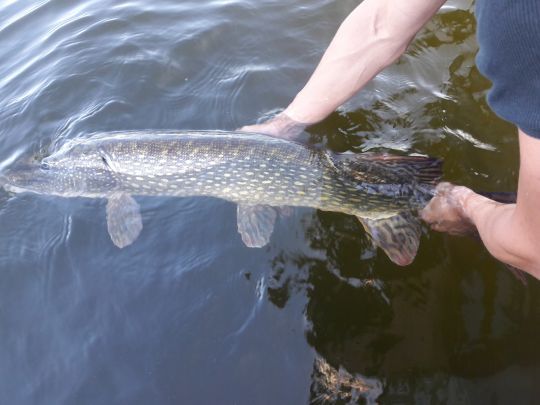
The final stage
When the fish comes to the surface, it's time to dry out. If it's not too big, it's lifted directly with the rod. If this is not the case, never rush after your catch, as this is the best way to make a mistake that could lead to losing it.
Instead, take your time and let the fish come to rest under the tip of the rod or at the end of the leader if it's hand-caught. And only when your catch is calm and in the right position can you drag it across the surface to your hand or landing net.
Once dry and free of the hook, a quick photo and measurement session will take place, then submerge the fish on the water's surface. The fish will swim away on its own when it's ready.
